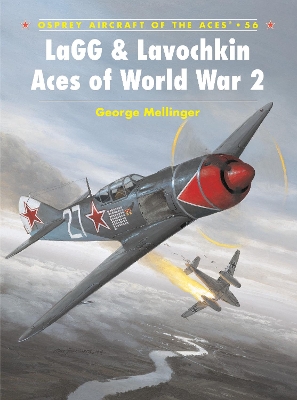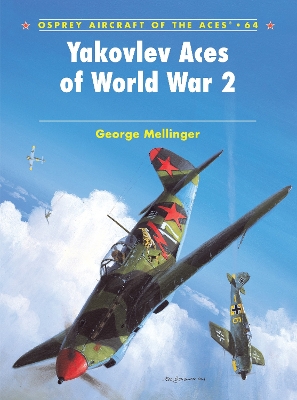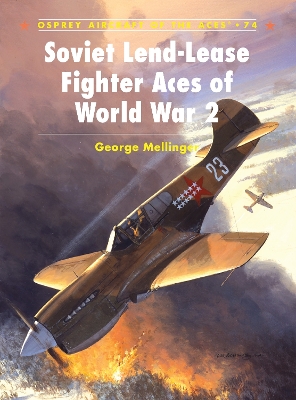Osprey Aircraft of the Aces
1 primary work • 3 total works
Book 56
This book examines the LaGG family of fighters, that were amongst the first modern piston-engined interceptors made available to the Red Air Forces in early 1941 and proved far better fighters than their radial-engined predecessors. Despite technical maladies and political interference from Moscow. the LaGG-3 matured into an effective fighter when flown to its strengths at low level. Many early Soviet aces were weaned on the LaGG-3, and if they survived the early massacres of 1941-42, they went on to fly the Lavochkin family of fighters. Indeed, the Lavochkin La-3, -5 and -7 were the fighters of choice for Heroes of the Soviet Union such as Ivan Kozhedub, who claimed 62 kills.
The Yak-1 entered Soviet service in 1941, one of three modern types of aircraft accepted for production just prior to the German invasion of the USSR Even with teething troubles, it proved an immediate thoroughbred, and was so popular that some aces even preferred it to later family members: it remained in production until 1944 - long after the Yak-7 and Yak-9 had become standard. This book examines the aircraft and the men who made ace in it; full colour artwork and first hand accounts bring the text to life.
By the end of 1941, the Soviet Union was near collapse and its air force almost annihilated, leaving large numbers of surviving pilots with no aircraft to fly. To help prevent this collapse, the UK supplied a total of 4300 Hurricanes and Spitfires to the USSR. After the United States entered the war, the Americans extended Lend-lease to include direct supply to the Soviets as well as the British, and among the aircraft sent were almost 10,000 fighters. Although the aircrafts were outdated and often unsuitable to Russian conditions, they served when they were needed, and a number of Russian pilots became Heroes of the Soviet Union flying Lend-lease aircraft. The Soviet government tried to conceal or minimize the importance of Lend-lease fighters well into the 1980s, and the pilots who flew them were discriminated against as 'foreigners'. Only in recent years have these pilots felt free to admit what they flew, and now the fascinating story of these men can emerge.


